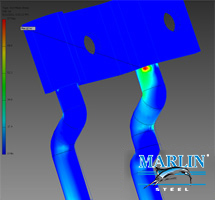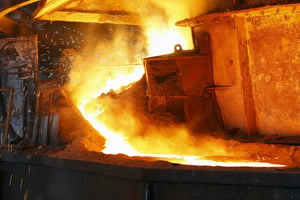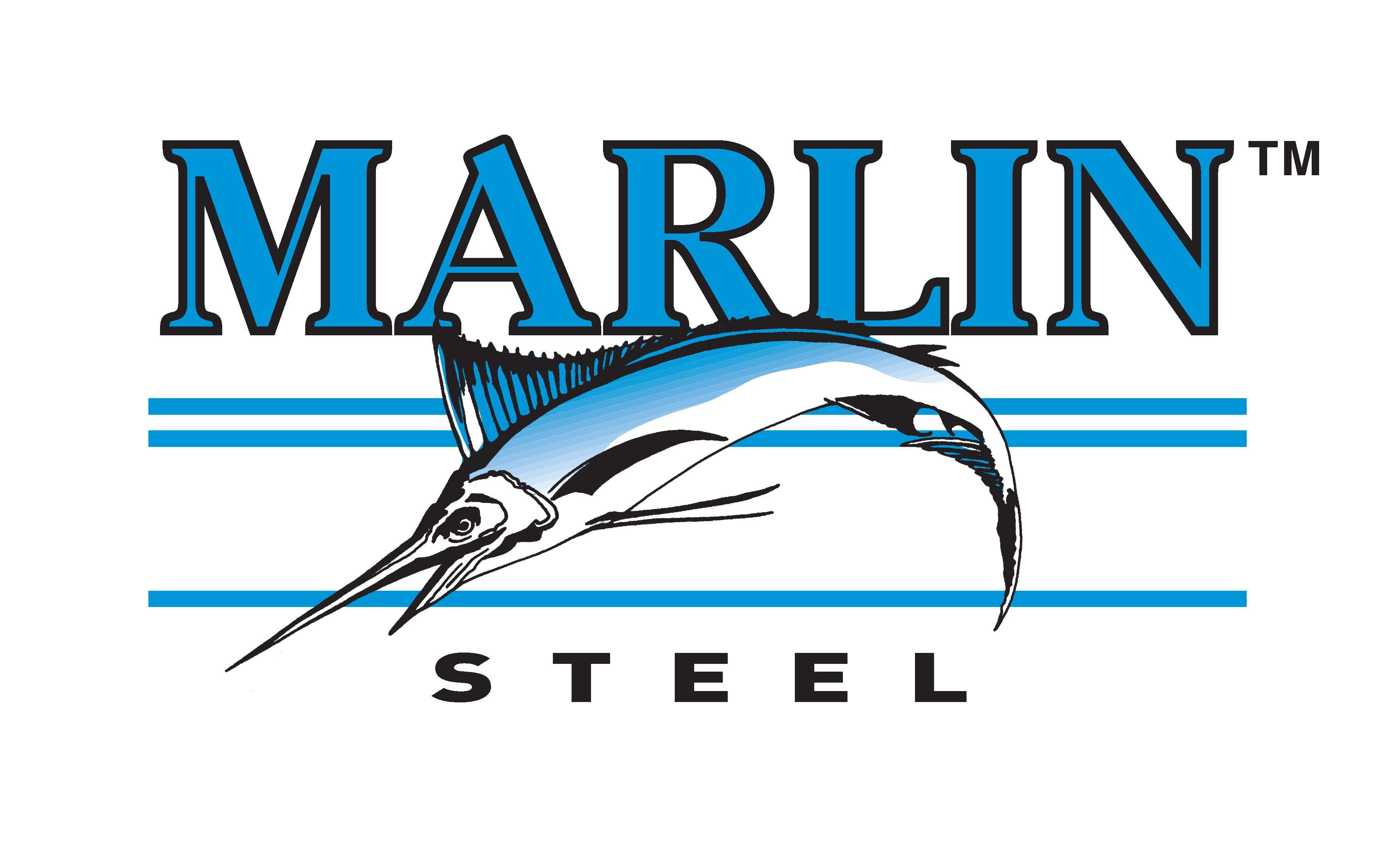 Physics simulation software programs, such as Autodesk, can be invaluable tools for mechanical engineers. Using this software, Marlin Steel has made countless custom steel wire basket designs more durable and useful for clients by identifying and fixing flaws in design before basket assembly.
Physics simulation software programs, such as Autodesk, can be invaluable tools for mechanical engineers. Using this software, Marlin Steel has made countless custom steel wire basket designs more durable and useful for clients by identifying and fixing flaws in design before basket assembly.
Autodesk physics simulations have helped Marlin’s degreed engineers save massive amounts of time on physical prototyping for numerous clients. This, in turn, helps Marlin meet incredibly strict production deadlines—taking baskets from initial concept to final delivery in as little as a couple of weeks rather than months.
There are a few different kinds of physics simulations that Marlin Steel may run on a basket’s design, each one tailored to a specific set of stress factors or performance needs.
1: Modal Analysis
Different materials and objects have a natural frequency at which they resonate. When a part is exposed to vibrations that match this frequency, the part will be damaged. Think of the classic scenario of an opera soprano singing at a high pitch that shatters nearby wineglasses—the vibrations from the soprano’s voice match the resonance frequency of the glass, and the glass is shaken apart to the point of shattering.
While glass is far more fragile and brittle than steel, similar effects may apply when a steel object is exposed to its resonance frequency—albeit usually not as suddenly or dramatically.
Modal analysis identifies the natural frequencies and “mode shapes,” or shapes of a structure during vibration for different parts of an object. This is based on both the materials specified in the AutoCAD model and the points of contact/shape of the object.
Marlin often runs this test on basket designs that will be used with automated machinery, in applications where strong vibrations or impact shocks are common—such as ultrasonic parts washing machines or conveyor systems.
Even when vibrations aren’t a match to the natural frequency of the basket, they can still produce adverse effects over time. This is why modal analysis is so crucial for each basket design.
2: Linear Static Stress
Linear static stress tests help Marlin’s degreed engineers determine whether or not the basket design is sufficient to withstand the weight of the parts/materials it will hold during the client’s manufacturing process.
This is the most basic stress test Marlin’s engineering team runs. The data assembled in this test is often carried over to other tests, such as the modal analysis mentioned above.
To get the test started, a CAD file is loaded and the data for the materials used, points of contact, and more are automatically transferred from the file. The information is reviewed by the engineer and manually revised in case a point of contact was not automatically registered.
Loads and constraints are then assigned based on the real-world use conditions of the basket. It is important to note that the accuracy of this simulation is dependent on Marlin’s degreed engineers knowing exactly what kinds of loads the baskets will carry and how it will carry them. This is why the dimensions, weight, and number of parts to be carried are all asked for in the Marlin Custom Basket Questionnaire.
3: Thermal Analysis
 In the thermal analysis, the thermal properties of the basket design, such as its thermal conductivity & coefficient of expansion, fluid density, and viscosity, are tested against the temperature conditions specified in a client’s process.
In the thermal analysis, the thermal properties of the basket design, such as its thermal conductivity & coefficient of expansion, fluid density, and viscosity, are tested against the temperature conditions specified in a client’s process.
This allows Marlin’s degreed engineers to simulate if and how the basket might expand or contract when exposed to different temperature extremes.
When combined with other simulation factors, such as linear static stress, thermal analysis allows Marlin’s degreed engineers to know if a basket will fall apart or become deformed because of high temperatures paired with heavy loads.
4: Fatigue Tests
One of the most important things Marlin’s degreed engineers need to know is how well a steel basket will hold up to a client’s use conditions over time. The wear and tear that a part accumulates over time can cause the basket to slowly lose shape or suddenly fail.
This is where fatigue tests can help.
In many ways, a fatigue test is similar to the linear static stress analysis, except with a few more inputs that account for the stress life of the basket and how parts will be inserted and removed. This analysis can be run to simulate how a basket will hold up after tens of thousands of hours of use and determine its lifespan.
If a basket would fail the fatigue test, the engineer is given a report as to why the design failed so the flaw can be corrected.



.gif)


